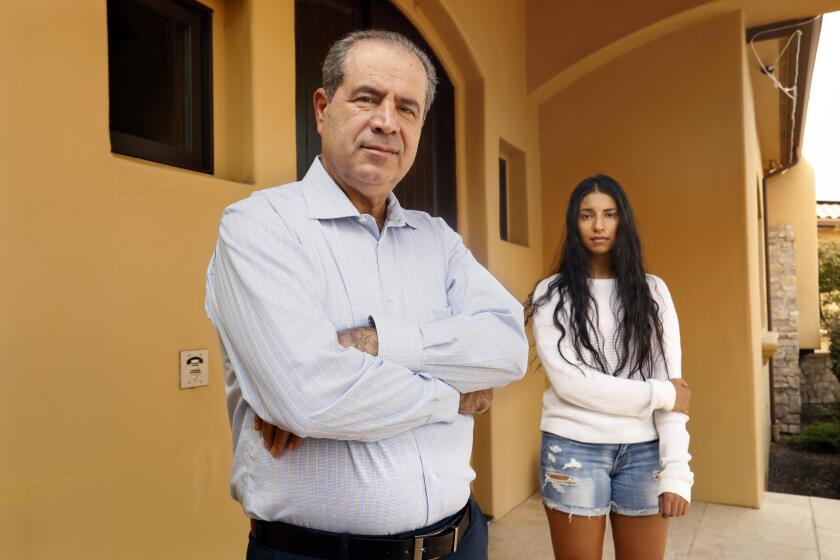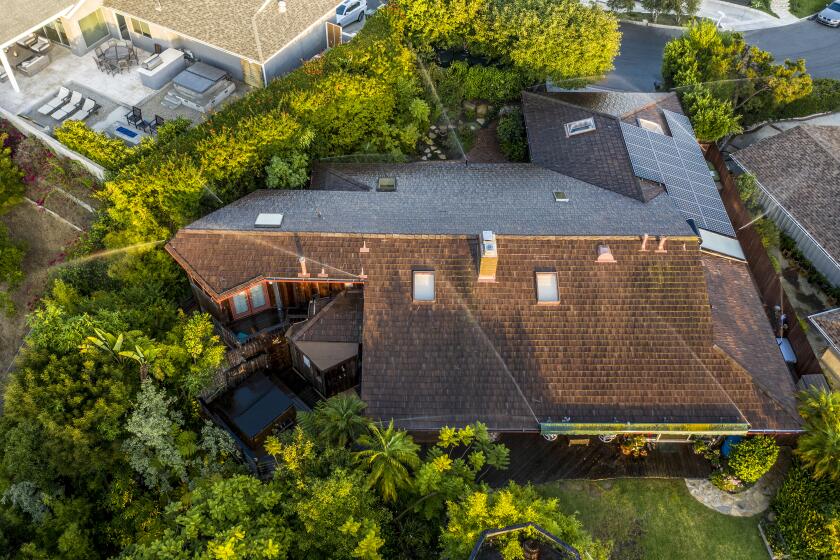Rules proposed by state insurance commissioner offer discount for reducing wildfire risks

- Share via
After multiple years of insurers dropping homeowners’ policies in areas hard-hit by wildfires, the state insurance commissioner is pushing for regulations that would offset rising premiums with discounts for mitigating wildfire risks.
On Oct. 19, the Department of Insurance will host an investigatory hearing where homeowners, industry experts and insurance providers, among others, can give their input into regulations Commissioner Ricardo Lara plans to initiate that would probably accelerate premium increases for some homeowners while giving them a chance to learn how their property’s risk is calculated and opportunities to reduce it, Lara’s office said.
“The reality is climate change is going to continue to disrupt communities through extreme heat and weather and affect our insurance markets,” Lara said. “Using my authority as a regulator to look at these key areas is really going to be critical.”
For several years now, the housing market in California’s expanding wildland-urban interface, the area where suburbia blends with the wildlands, has been rocked by wind-driven fires that have wiped out housing stock and years of insurers’ profits along with it. In response, insurers have been dropping policies in those at-risk areas by the thousands, pushing people into the secondary market, and dramatically raising the premiums for many others, arguing that the tandem moves are meant to limit their financial risks.
With the North Complex fire still flaring in Butte County, many wonder if this family’s lifeline to a community will rise from the ashes.
But at the same time, consumer advocates say, insurers have been slow-rolling the rate increases across the rest of their portfolio, keeping the increases overall below 7% annually so it doesn’t open them up for a public inspection, enabled under Proposition 103, approved in 1988.
Lara’s office said it would push for insurers to seek rate increases more reflective of the risks the companies’ actuaries spell out, which means probably higher than 7%, but it would also require insurers provide more information to homeowners on what they can do to reduce those risks.
“Time and time again we heard from consumers, ‘How do I appeal my score? How do I know what I need to do to lower that score?’ And right now there’s nothing,” Lara said.
To soften the rate-increase impact, Lara said his office will require that insurers provide and explain the reasoning behind a homeowner’s particular fire risk score. Thousands of homeowners in the last few years have received notices when their policies ended telling them they were suddenly uninsurable because of fire risks, or conversely, that it would cost prohibitively more to remain covered and there was nothing they could do to change it.
“We’re saying, ‘Let’s promote transparency and recognize that home-hardening, that’s science-based, works,” Lara said.
Elaborate sprinkler systems could be a waste of money in protecting your home from wildfire. A better strategy, experts say, is to team up with neighbors to fireproof your entire community.
To that end, insurers have been working with the Insurance Institute for Business & Home Safety to outline a standard approach to home hardening on an individual and communitywide scale, which wildfire experts say is key to limiting the loss of life and property. Lara said he’ll work with those groups to determine what types of strategies homeowners can take to reduce their risks and get a discount. A failed Assembly bill that Lara endorsed earlier this year would have required insurers to cover homes whose owners reduced their risks.
Historically, Californians have a spotty track record of mitigating their wildfire risks on a large scale, and with few exceptions, local governments have done a poor job of enforcing the standards that already exist. Both consumers and local governments will have a role in seeing the proposed regulations bear fruit after statewide mitigation standards are set.
“We’re incentivizing the consumer and incentivizing the local community to bring down the risk and keeping the insurance market vibrant where they’re competing for people’s businesses,” Lara said.
One insurance group, the American Property Casualty Insurance Assn., which represents about 60% of the property casualty insurance market, welcomed the upcoming hearing as an opportunity to revisit the rate-making process overall. Insurers have complained that California’s laws don’t allow them to price in the increasing risks linked to climate change because they can set rates based only on past losses.
“APCIA applauds the commissioner’s interest in improving the regulatory system to encourage more insurers to write insurance in high-risk wildfire areas and give consumer more choices,” the group said in a statement. “Clearly, California is facing dramatically different conditions with five of the state’s largest fires occurring just this year. Climate change is altering conditions in California and we expect this to be the ‘new normal.’”
More to Read
Sign up for Essential California
The most important California stories and recommendations in your inbox every morning.
You may occasionally receive promotional content from the Los Angeles Times.
















